Raspberry Glen Fine: description, cultivation and reviews of the variety
Summer heat is always associated with the aroma of juicy raspberries, with buzzing bees in its thickets, wasps. New varieties of berry bushes have intensive growth, reaching a height of three meters or more. From a distance, you can't tell that this is a shrub, it looks like a raspberry tree, covered with half-meter brushes with large berries. Interesting varieties of English selection Glen. Among them, Glen Fine is considered one of the best summer types of berry culture.
They used to read about giant berries in science fiction novels, but now they are grown on their plots by modern gardeners. These include a variety of intensive type, which has great potential, growth - Glen Fine.
Content:
- Description of the variety
- Breeding methods, planting raspberries
- Care advice
- Preparing a shrub for winter
- Disease and pest control
- The advantages of the variety, reviews of gardeners
Description of the variety
Raspberries the newest variety is undemanding to growing conditions. Her root system, consisting of rhizome and adventitious roots, is shallow. Depending on the composition of the soil, the roots go down thirty to forty centimeters, less often - eighty. From the surface of the earth, roots can be found at a depth of ten to fifteen centimeters.
Leaving horizontally far from the bushes, the roots form buds, from which new shoots appear. These offspring serve as the basis for new plantations of raspberries, or they are simply destroyed. If this is not done, then the planting of berry bushes will be depleted. Replacement shoots of Glen Fine varietal raspberries emerge from basal buds. They replace the fruiting branches for another year. Each branch lives for two years, then it is excised. Most of the berries are given by the middle parts of the stem.
A feature of the variety's shoots is the absence of thorns.
Raspberry blooms in June. Her inflorescences are bisexual, so the crop is obtained from plantings of one variety. Raspberries Glen Fine have slightly elongated berries, prefabricated drupes, reaching a weight of five to six grams each. The variety is distinguished by the duration of fruiting up to one and a half months.
Red fragrant berries do not crumble from the bush, keep well for five days. The excellent presentation of raspberries contributes to the organization of growing berries on an industrial scale. The high yield of the variety was also appreciated. Thirty kilograms of fragrant raspberries are harvested from one square meter.
Breeding methods, planting raspberries
Raspberries are propagated by root suckers. The best place for her would be the southern slopes with loamy black soil. Groundwater should approach the surface at a depth of one and a half meters.
It is good if nothing has grown before at the site chosen for planting. It remains to free it from the weeds and plow.
There are a number of requirements for planting raspberries:
- Root shoots must be annual. Their stem is just over one centimeter thick.
- The shoot must be cut off so that it does not bear fruit in the year of planting. Leave a seedling with four buds and a height of ten centimeters.
- The optimal time for breeding is early spring, autumn until early October.It is possible to plant annual offspring in the summer, in June.
- Better to arrange landing on a cloudy cool day.
- The seedlings are placed in a row with a distance of half a meter from each other.
- For nesting, there can be up to three annual seedlings in one hole. Then the bush will be stronger, well-bearing.
- The size of the pits reaches 35x35x30 centimeters.
- On poor soils, fertilizer is applied in the form of humus with five grams of superphosphate, two grams of potassium salt.
- The embedding depth of the surface roots is five centimeters.
- The soil around the shoot is compacted, watered, using half a bucket of water per hole.
- Mulch from straw, manure, sawdust a layer of up to eight centimeters.
If the planting is done correctly, then the next year the raspberries will begin to bear fruit.
Care advice
The Glen Fine variety is unpretentious in care:
- Timely weeding and watering are important for him. The plantings are watered for the first time five days after planting the shoots. Then two or three more times over the summer. The Glen Fine variety is not afraid of drought, but bushes can die from severe drying out of the soil. Before winter, the plant must be watered.
- The raspberry plantation is mulched with a layer of ten centimeters. The procedure replaces loosening the soil. Apply mulch to wet soil. Its belts help to free plantings from weeds, of which the most vicious is wheatgrass.
- Long shoots of raspberries need a garter. It is convenient to tie the bushes to a wire in two rows, stretched at a height of one and a half to two meters.
- The annual organization of feeding will only increase the yield of the shrub. Fertilization begins in early spring, continuing in the summer ten days before the berries ripen. And in the fall, you must definitely feed the berry. Of the minerals, potassium salt and superphosphate are used. It is possible with a solution mullein in a ratio of 1: 6, bird droppings – 1:15.
- Attention is paid to the formation of the bush. Annual shoots are pruned in early spring, leaving a hemp of ten centimeters. The branches that appear on it will bear fruit in the fall.
- Root offspring, unnecessary for reproduction, must be destroyed three to four times in the summer.
You can get high yields of fragrant berries with proper care of the berry crop.
Preparing a shrub for winter
Although the Glen Fine raspberry is resistant to adverse weather conditions, at first it must be prepared for the harsh winter. In September, pruning of the bushes is carried out. Harvested shoots that bear fruit and those that have seals on the trunks are infected with gall midge.
As soon as the ground begins to freeze, carefully bend the branches to the ground and tie them to the pegs. Do not bend the raspberries too low - they may break. And laid on the ground, they will rot. The bushes should be covered with non-woven material or earth, straw.
Before severe frosts, the plantings of raspberries are covered with snow from above.
It is necessary to apply fertilizer to the soil so that fertilizing can help the plant to stock up on energy for the winter. It is best to feed with manure, which decomposes well, will give maximum nutrition. Use wood ash mixed with superphosphate. Potassium salt is also good to feed in the amount of fifty grams. Mineral fertilizer replace with thirty grams of wood ash in a bucket of water. Having properly prepared the bushes for winter, in the spring we will get healthy shoots ready for fruiting.
Disease and pest control
Glen Fine is resistant to disease, but pathogenic fungi can cause leaf spot. To combat parasites, treatment is applied Bordeaux mixture three times over the summer. The first spraying is carried out in the presence of buds, the second - after three weeks, and the last time after the harvest.
The ring spot virus is spreading nematodes... Pests, settling in the ground, affect the roots of the plant. You can notice the disease by the curliness, fragility of the leaves, their yellowing in spring or autumn. Fungus anthracnose manifests itself in spots on the stems. When it is affected, the berries dry up, the leaves fall off. It is difficult to get a harvest from a diseased plant.
Of the pests, raspberries are attacked by the weevil, the raspberry beetle.
The weevil, a small black beetle, flies from one plant to another, feeding on leaves and flower buds. A small brown insect with shields on its back, the raspberry beetle harms raspberries by devouring leaves, berries, and inflorescences. For the winter, the pest is buried in the ground. To get rid of parasites, the bushes are sprayed insecticides, a solution of laundry soap.
If the shoots have darkened from the inside, it means that a mosquito, a gall midge, has wound up in the plantings. Moving inside the shoots, the insect larvae lead to the death of the stems. Fight the pest Karbofos. The first time they are sprayed with a solution in early spring, until the mosquito appears. Then berry bushes are processed twice more. It is also necessary to dig up the earth around the raspberries in order to destroy the larvae living there. You can completely get rid of diseases and pests of berry crops if you notice deviations in the growth of the bush in time.
The advantages of the variety, reviews of gardeners
The popularity of the mid-season raspberry variety Glen Fine is spreading all over the world. Growers appreciate the benefits of growing the variety. These include:
- frost resistance, drought resistance
- long-term fruiting
- excellent preservation of the berry for a week
- unpretentious care
- excellent taste of large berries
Many people note the high potential of the berry bush. From landings raspberries of a well-known variety, high yields are always obtained. They also choose it for growing on a large scale for the sale of products.
More information can be found in the video:



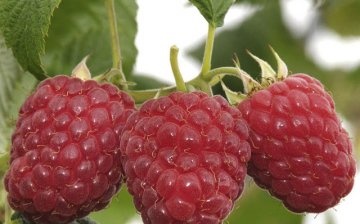
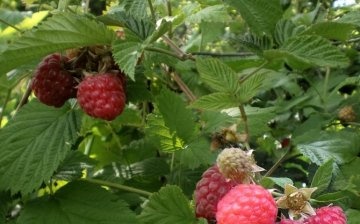


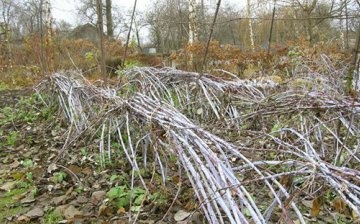
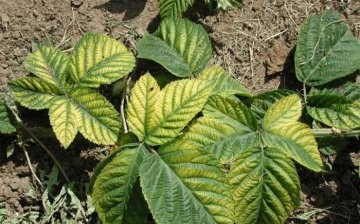
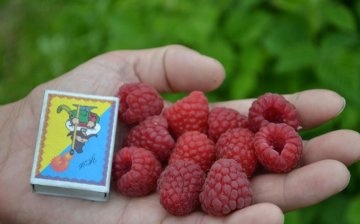







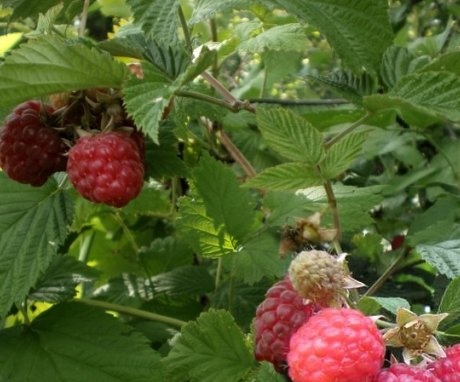
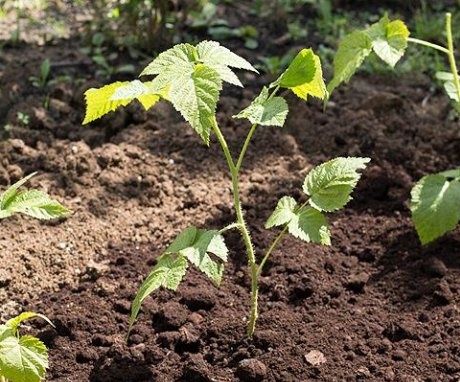
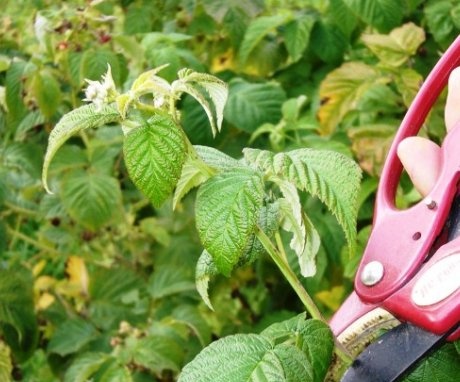
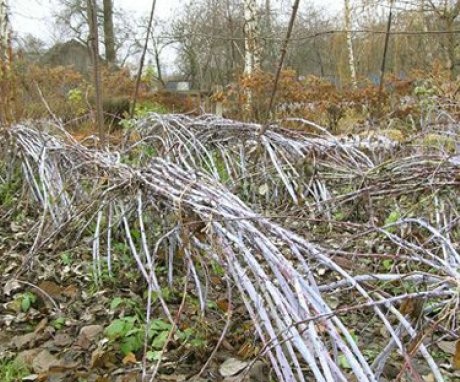

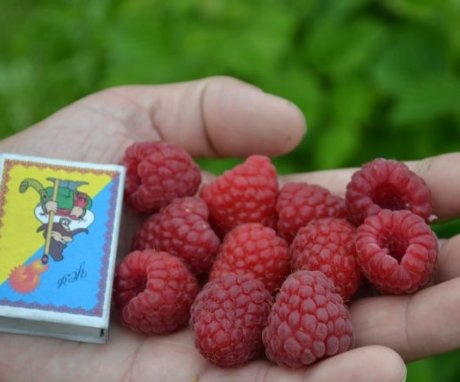
Something incredible fertility in this variety of raspberries. True, we take care of raspberry bushes much less than recommended, but the yields are also lower, by about 10-15 times. If I manage to buy a cutting, then I will definitely plant this raspberry.
I have a Glen Fine variety that bears fruit well. And the care is really very unpretentious - watering, pruning, fertilizing with manure and wood ash (remains after heating a fireplace or making a fire). We did not encounter any illnesses. I transplanted new cuttings to the other side of the site, a rather large raspberry tree has already appeared.